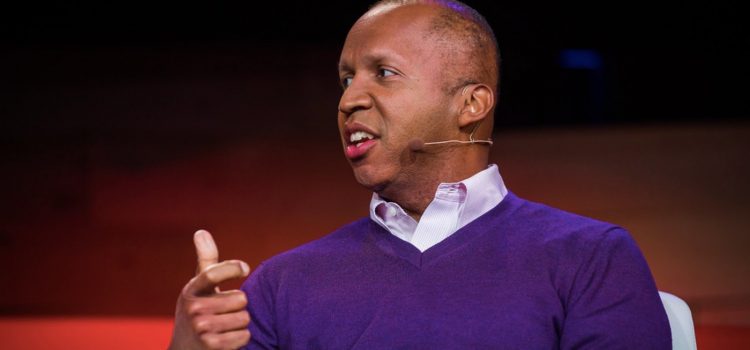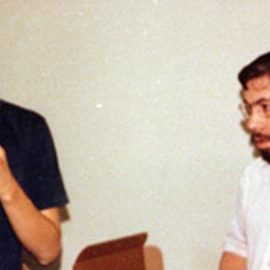

This article is an excerpt from the Shortform book guide to "Just Mercy" by Bryan Stevenson. Shortform has the world's best summaries and analyses of books you should be reading.
Like this article? Sign up for a free trial here.
Who is Bryan Stevenson? How does Stevenson help death row inmates?
Stevenson’s book Just Mercy details his life work as a lawyer and social justice activist who helps death row inmates who could be redeemed. He shares how his legal background showed him the unfairness of the justice system and the need for merciful treatment of the accused.
Keep reading for more on Stevenson’s work as a lawyer who exposes the corrupt justice system.
Working With Death Row Inmates
Who is Bryan Stevenson, and how did he get his start as a lawyer? As a student at Harvard Law School in 1983, Stevenson completed a one-month internship with the SPDC—an organization representing death row inmates in Georgia. Stevenson writes that while working with the SPDC, he realized that even death row prisoners have the potential for redemption.
(Shortform note: Even if Stevenson is correct that death row inmates have the potential for redemption, death row conditions aren’t conducive to that redemption. In many states where the death penalty is legal, death row inmates are placed in indefinite solitary confinement and allotted fewer than four hours of out-of-cell recreation daily. According to the American Civil Liberties Union (ACLU), these conditions harm inmates’ well-being to the extent that they’d rather die than continue living.)
After the US Supreme Court reaffirmed the constitutionality of capital punishment in 1976, Georgia was flooded with death row inmates whose execution dates drew nearer. In response, the SPDC worked to prevent inmates from being executed before competent lawyers could assess their cases.
(Shortform note: The Court’s decision to reaffirm the constitutionality of capital punishment in 1976 came four years after the moratorium on capital punishment imposed by Furman v. Georgia. In that case, the Court ruled that states’ applications of the death penalty were objectionably capricious, constituting cruel and unusual punishment. However, because they didn’t rule capital punishment itself unconstitutional, many states changed their statutes, leading the Court to reaffirm it in 1976.)
An intern with little experience, Stevenson went to death row to meet a condemned inmate without a lawyer. His task, as he recalls, was simple: Tell this inmate that he won’t be executed in the next year.
After Stevenson nervously conveyed the message, the inmate was ecstatic—he talked with Stevenson for hours longer than their allotted time. Stevenson recalls the inmate defiantly singing an old church hymn when he was taken back to his cell. The flickers of hope and potential, Stevenson notes, were unmistakable.
(Shortform note: Hopeful moments on death row are few and far between, as inmates often suffer from death row syndrome—sustained psychological strain resulting from the uncertainty of execution and the isolating conditions on death row.)
The Formation of the Equal Justice Initiative
Inspired by the SPDC’s work, in 1989, Stevenson co-founded the Equal Justice Initiative (EJI)—a nonprofit that provided free legal assistance to Alabama’s death row inmates. Because Alabama’s legal climate encouraged expedited executions, the EJI was inundated with death row cases and struggled to keep up. Stevenson’s work during this period reveals pervasive issues that plagued the justice system: Defendants lacked adequate representation and were hastily sentenced to extreme punishments.
Although Alabama had the fastest-growing death row population in the country, Stevenson notes that it had no public defender system. Consequently, many death row inmates lacked legal counsel, leaving the EJI flush with requests for representation.
(Shortform note: The disproportionately large death row population that Stevenson dealt with in Alabama in the 1980s has continued into the 21st century—as of 2022, Alabama has the fourth highest death row population of any state, totaling 166 inmates. In a similar vein, as of 2020, it has the fifth highest per capita execution rate of any state, totaling 1.37 executions per 100,000 citizens.)
Moreover, Alabama elected judges via partisan elections, which incentivized being “tough on crime” to convey strength to voters. Relatedly, Alabama was one of two states to allow judicial overrides, where judges could override sentences from juries. In 91% of Alabama cases, these overrides were used to impose the death penalty when juries recommended life without parole.
(Shortform note: Alabama outlawed judicial override in 2017, making the practice fully defunct across the US. However, while Governor Kay Ivey’s bill outlaws judicial override in future cases, there remain inmates on Alabama’s death row whose sentences were imposed via judicial overrides.)
Finally, Stevenson writes that the Supreme Court changed its treatment of death penalty appeals in 1989, leading to expedited executions for death row inmates. In light of these factors, Stevenson had to represent an array of clients, prioritizing those whose execution dates were nearest.

———End of Preview———
Like what you just read? Read the rest of the world's best book summary and analysis of Bryan Stevenson's "Just Mercy" at Shortform.
Here's what you'll find in our full Just Mercy summary:
- An examination of the justice system's failures toward marginalized populations
- Examples of criminal cases from history that illistrate the failures
- Possible solutions for repairing the justice system in America






